Collecting and Collections Part III: Collecting Items of Local Interest – David Hay Fleming and St Andrews
There are a multitude of items which a collector can choose to collect: books, tea pots, figurines, etc. But a collection doesn’t have to be based around one particular form; it can be based around a theme. David Hay Fleming (1849-1931) was a man with a passion for history and antiquity, and as such he was very much interested in the history of his birth town, St Andrews. Today’s blog post will therefore look at some of the items in the Hay Fleming Collection which are based around the theme of St Andrews.
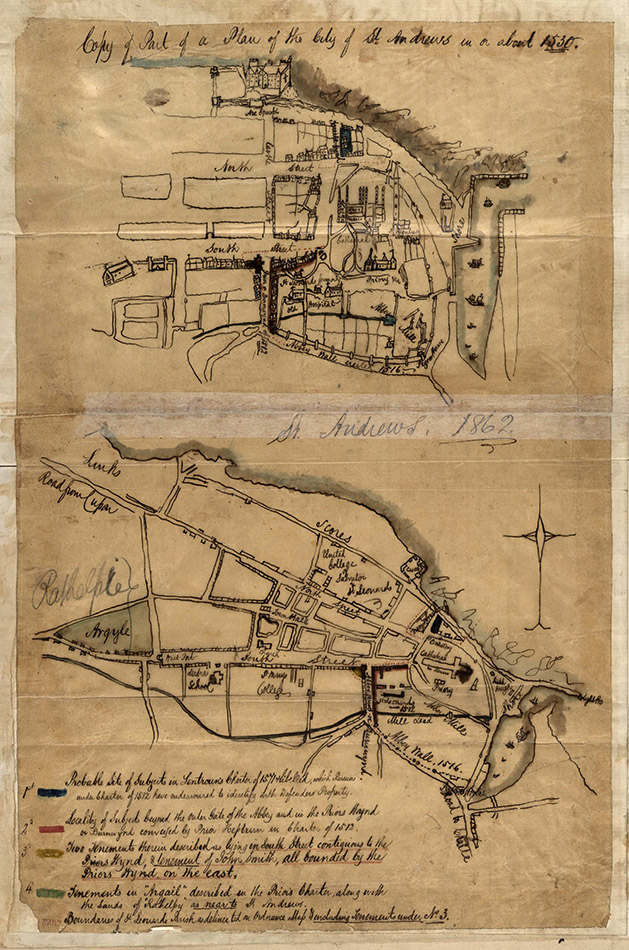
Books are an obvious starting point. Hay Fleming owned books not only on the history of St Andrews (including Lyon’s History of St Andrews [Hay DA890.S1L9] and Grierson’s Saint Andrews as it was and as it is [Hay DA890.S1G8]), but also guide books (including many editions of his own!), as well as books about famous St Andreans, such as Bishop James Kennedy (ca. 1408-1465) and golfer Tom Morris (1821-1908).
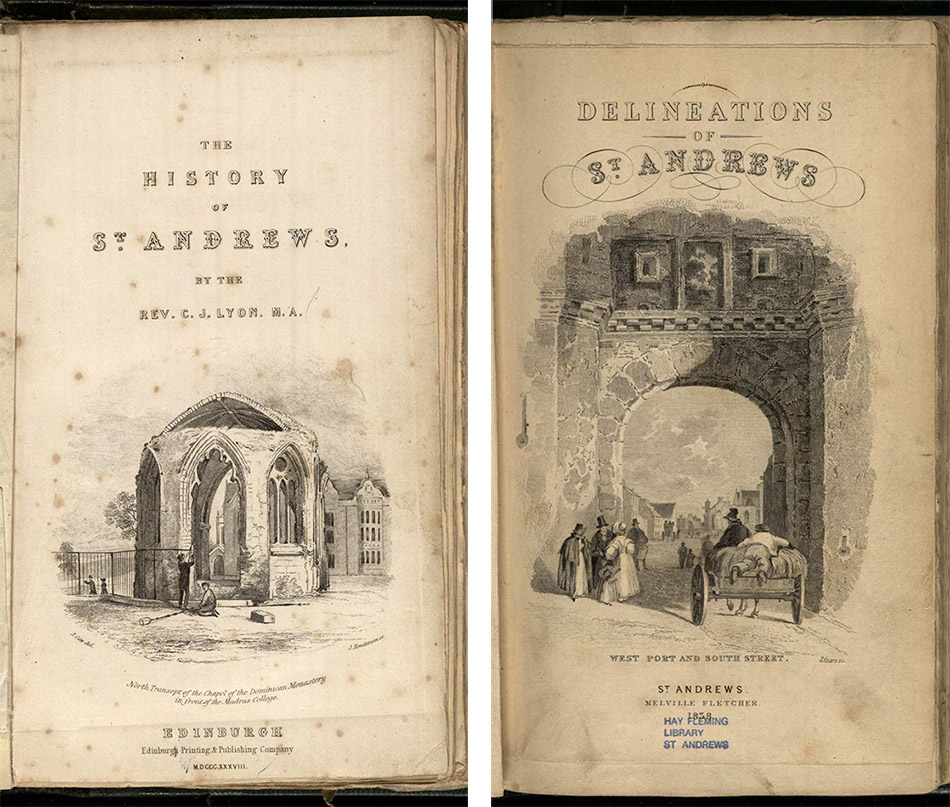
Yet it was not only books in which Hay Fleming was interested. He also owned many manuscripts relating to St Andrews. We find amongst his collection a minute book of the tailor trade of St. Andrews, 1659-1815, acquired by Hay Fleming in 1905, and a volume containing minutes of meetings and new appointments in the weaver trade in St Andrews, 1751-1848. This latter was purchased on 30th October 1917, from David Mitchell, a cabinet maker in St Andrews. Hay Fleming could be very meticulous about recording when and where he purchased an item, and many of the items in his collection (especially his books) contain an ownership inscription. His activity as collector probably saved such important records for posterity.
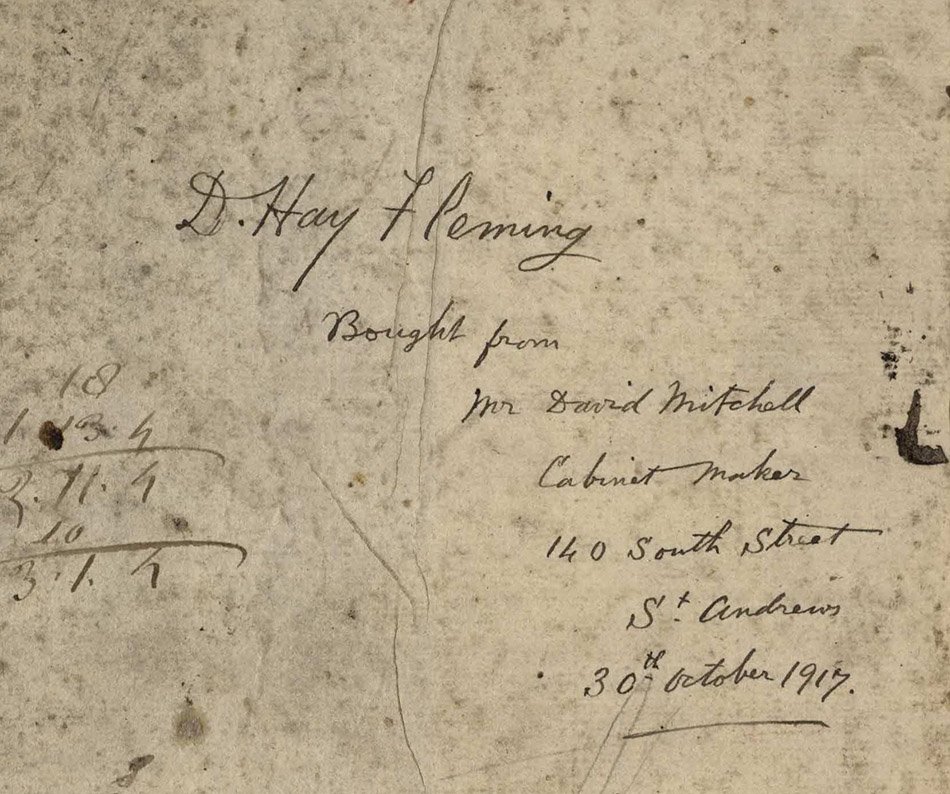
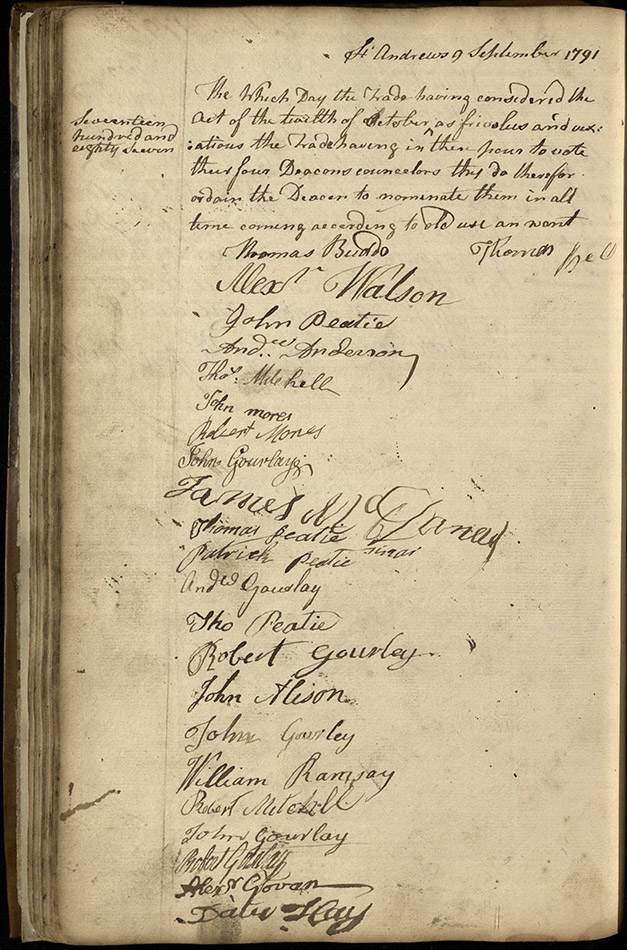
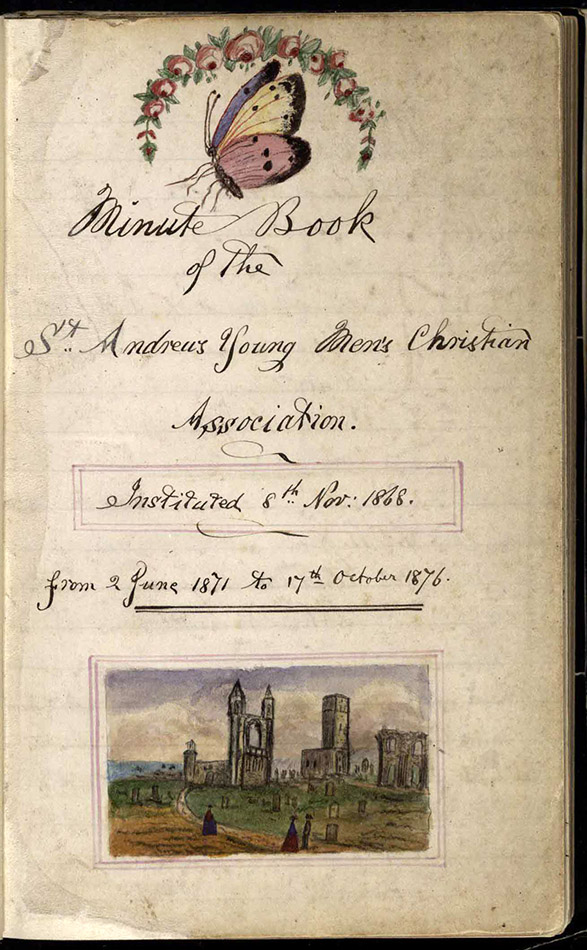
There is no doubt Hay Fleming would have scoured bookshops and auctions for material to add to his collections. Sometimes, though, a bookseller would write to him; an examination roll (1720-1742) of the inhabitants of St Andrews kept by John McCormick, minister of St Andrews, has a letter from Thomson Brothers, Edinburgh, 1896, pasted to the inside of the front cover, offering the manuscript to Hay Fleming for 10/6; the purchase was duly made later that year.
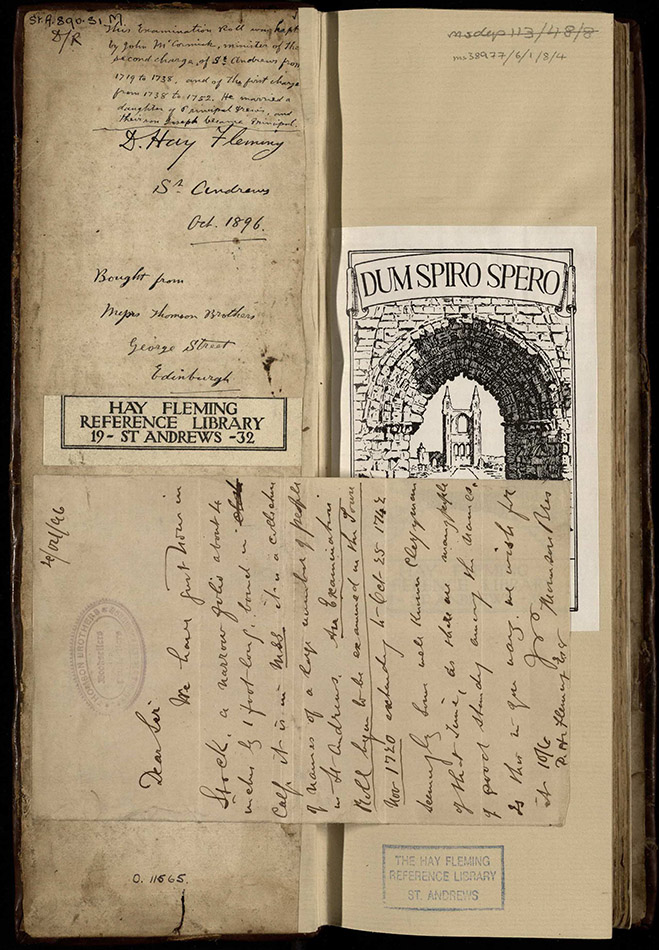
“Dear Sir
We have just now in Stock, a narrow folio about 4 inches by 1 foot long, bound in cloth calf it is in mss it is a collection of names of a large number of people in St Andrews. An Examination Roll begun to be examined in the Town Nov 1720 extending to Oct 25 1742 Seemingly some well know Clergyman of that time, as there are many people of good standing among the names. Is this in your way we wish for it 10/6”
A simpler means, however, of adding to a collection was to keep newspaper cuttings. Whilst there are loose cuttings amongst his collection, more often Hay Fleming was organised, and arranged his cuttings thematically in notebooks. For example, one notebook contains newspaper cuttings from the Scotsman, St Andrews Citizen, Glasgow Herald, and Dundee Advertiser relating to the University of St Andrews Court and Council meetings, 1890-1894. Another notebook contains cuttings relating to St Andrews Links, mostly from the Citizen, from 1893-1894, but with a couple from 1930 regarding the Royal and Ancient Clubhouse, evidence that the book remained in use.
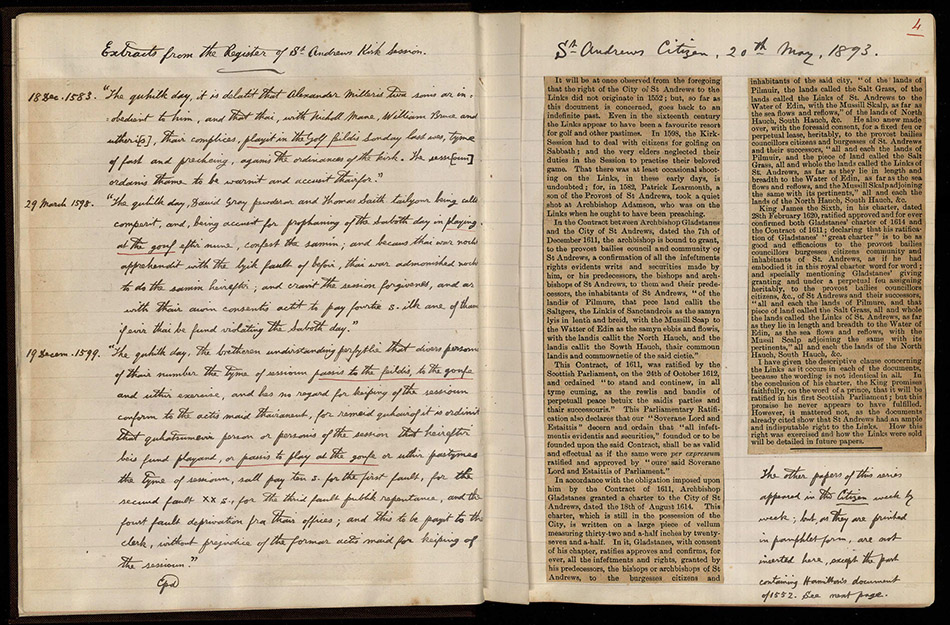
There is also much material which can be classed as ‘ephemera’, such as the 19th-century letterheads cut from receipts of St Andrews businesses, perhaps retained because of the lovely engraved illustrations. Other items may have been retained simply as an act of memorabilia. Thus we find an invitation to Mr and Mrs Fleming to attend the opening of the new Gatty Marine Laboratory at the University of St Andrews on 29 August 1896, and an invitation to the dinner on 1st July 1908 in honour of the Honourable Sir J. H. Carruthers (1857-1932), Ex-Premier of New South Wales, and Sir John Hay (1816-1892), the former having received an Honorary Degree of Doctor of Laws (LL.D.) earlier that morning.
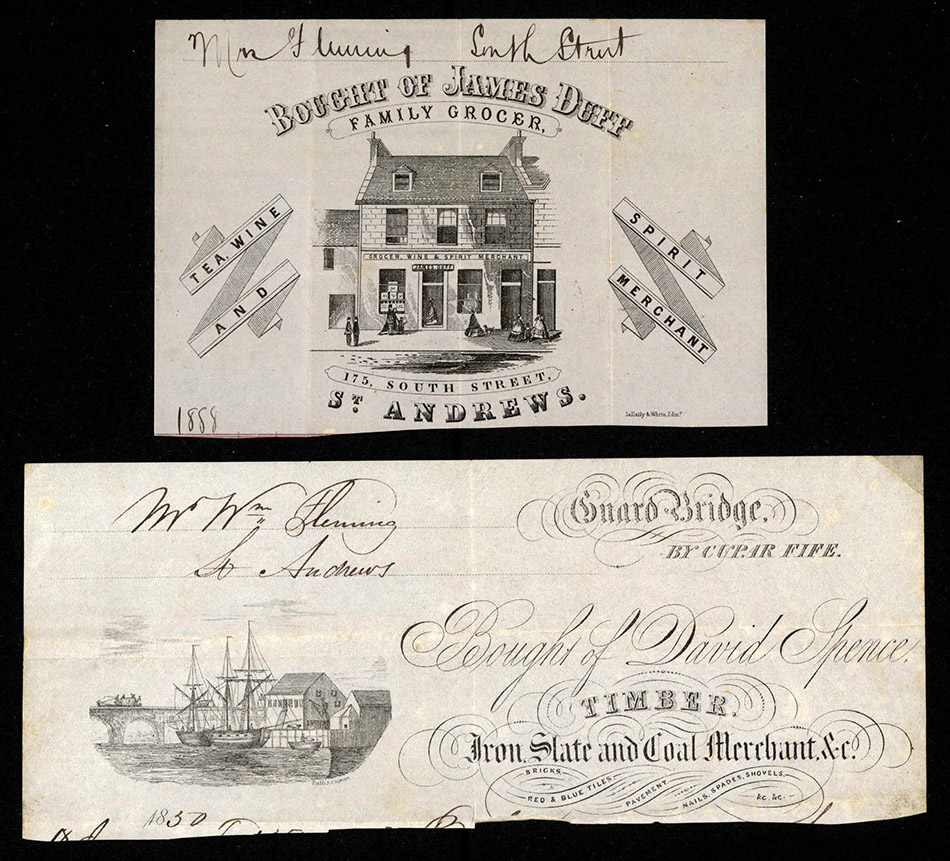
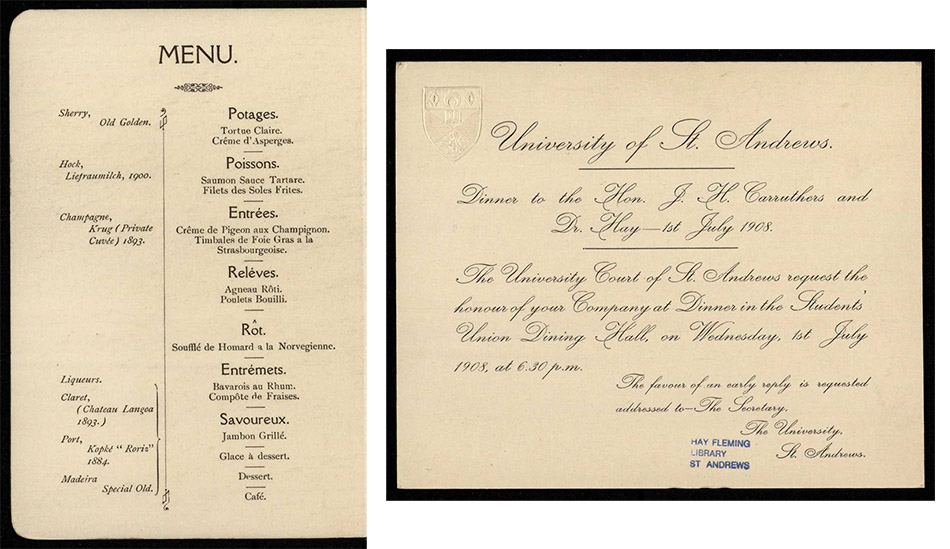
During his own lifetime Hay Fleming may not have thought of such ephemera as forming part of his collections, but almost 90 years after his death these are very much part of his ‘collection’, and help us to understand both his daily life and his personal interests. The joy of a collection of items of local interest means that material such as invitations, newspaper cuttings, letterheads, manuscripts, and books can all sit side by side as a cohesive unit.
Briony Harding
Assistant Rare Books Librarian
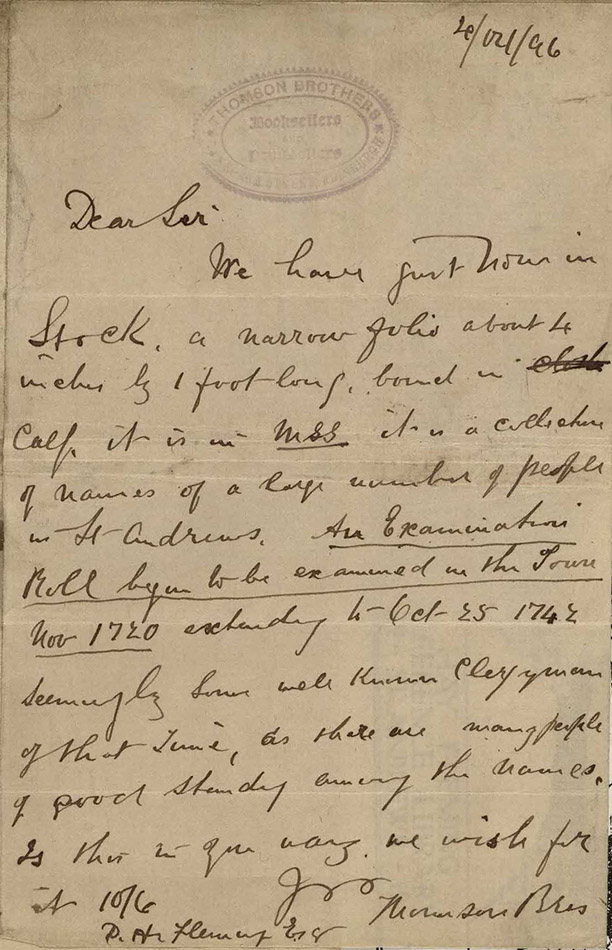
with reference to your 2nd group of illustrations, the engraving on the left is I believe of the ruins of the chapel of the Blackfriars, and not the Greyfriars. Russell Kirk corroborates this. But thank you for your interesting blog. Julia
Hi Julia, thanks for pointing out the error. You are quite right, it is an image of the Blackfriars Chapel. We have corrected the caption for the image.
Fascinating, thank you.